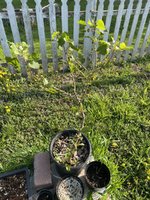I have 50 black cottonwoods which have been collected from various locations spanning from the eastern slopes of the Cascades to here in the Willamette Valley. The largest one I've been taking to Andrew Robson at Rakuyo bonsai for occasional guidance and development every few months. I too was convinced for a while by naysayers when I had problems with basal suckers and waterspouts here and there. I overcame those problems, fully.
Please understand that I do not mean to disparage you or anything you do as a person and only seek to specifically call the above quote out, but I have to, because I enjoy this species, have success with it, and want to encourage others to try and be part of a community of people growing this species:
What you've said in this specific quote is 100% not true.
I humbly and respectfully suggest and guess that you specifically did not have luck with it and may not have been aware of nuances / techniques relating to this species. There's nothing laborious or magical about developing cottonwood as a bonsai, and on the contrary, it seems well-suited for bonsai and is very very strong. It straight up works if you are applying known-good deciduous broadleaf bonsai techniques, cut away basal or branch junction suckers/waterspouts if/when they happen, and otherwise follow good bonsai practices.
Apologies if that comes off strong, but can't really let this misinformation stand. Populus as a genus works in bonsai. Black cottonwood works for bonsai. Aspen works for bonsai. Some people can't get these to work. This does not mean that it doesn't work for bonsai or is "more trouble than it is worth" or has some laborious aspect associated with it. Cottonwood is far less laborious than japanese black pine. My two cents and hopefully will counteract what
@Mikecheck123 has said here.


